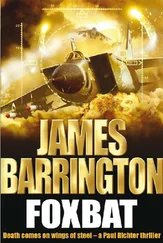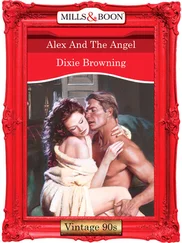Browning, typically, was embarrassed by such awards and by the inevitable fame and attention they generated, and probably also because of the comments he attracted from his equally down-to-earth brothers, who found the ‘Sir’ in front of his name a source of great amusement.
Despite the enormous wealth he had accumulated during his lifetime, and the fame which was inseparable from this fortune, John Browning was one of those very rare individuals who simply never changed. He was a country boy from Utah by birth, and he remained essentially unchanged for the rest of his life. He was a simple man with a plain and simple outlook on life.
He was always happiest when he was in his workshop tackling a new problem or working on a new weapon. His dislike of the pomp and ceremony is clearly shown by the fact that, as his brothers often reported, whenever he returned from some meeting or event, he would frequently go immediately into the workshop in his dress clothes, not even bothering to change. And his mother Elisabeth perhaps said it best when she remarked, after describing her son’s younger days in the family workshop: ‘And there’s been grease on John’s face to this blessed day!’
John Moses Browning died on the 26 November 1926 in Liege at the age of 71. He was, naturally, still working, and died at his bench in his son Val’s design shop, of a heart attack. It was probably the way he would have wanted to go, doing the work he loved, if the choice had been offered to him.
The weapon he was perfecting was a self-loading pistol, a weapon that was finally released in 1935 as the FN GP35, but became much better known as the Browning Hi-Power, one of the most successful pistol designs of all time.
The last design Browning completed was the superposed shotgun, an over and under weapon that was arguably the most elegant design he ever made. It was first manufactured with twin triggers, but the design was later modified to incorporate only a single trigger by Val Browning. It was added to the FN catalogue in 1931 and, like so many of Browning’s designs, it continues to be produced nearly a century later.
Because of Browning’s enormous, and largely selfless, contribution to the arsenal of weapons used by the American military, his body was escorted back to the United States with a full military escort, and at his funeral the eulogy was read by the then Secretary of War, Dwight F Davis.
Browning himself was consistently modest about his abilities, and notably once remarked: ‘ The time and place for a gun maker just got together on this corner. And I happened along. ’ But there is absolutely no question of the importance of this inventive genius in the world of firearms.
The title of this work is The Man Who Made Guns , which is appropriate on two levels. First, John Moses Browning made guns — he was a manufacturer of firearms — but, second and more importantly, his designs quite literally made Winchester, Colt and FN, and contributed to the success of other manufacturers such as Ithaca and Remington. Very few major manufacturers of firearms anywhere in the world during the twentieth century managed to survive unless they purchased a licence to manufacture at least one of his designs.
Browning’s massive contributions to the advancement of firearms technology had a huge and lasting effect upon weapon design, and they continue to be of enormous importance even today. In the early days he was instrumental in the transition from black powder weapons to the age of modern smokeless powders with their vastly increased breech pressures. And it wasn’t just the weapons. Browning also developed a number of cartridges which are still listed among the most popular in the world, including the .45 ACP and the .50 BMG.
Perhaps the neatest summary of the enduring legacy of John Moses Browning comes from weapon historian Philip Sharpe, who said: ‘Browning developments all had one peculiar and very necessary feature. They worked, and kept on working. There are few modern guns today that have not been influenced one way or another by Browning’s hand.’
It is difficult, if not impossible, in a work of this length to convey more than the briefest of impressions of a man of Browning’s stature and genius. In a gunsmithing career spanning more than half a century, he designed and built 80 separate firearms, 44 of which were commercially manufactured by Winchester. And the range of weapons was simply astonishing; from the single-shot .22 rifle intended as a boy’s first gun up to 37 mm cannon designed for naval and artillery use. His designs covered almost every type of firearm, included singe-shot rifles, lever-action, pump-action, semi-automatic and fully-automatic weapons. Probably he will best be remembered for the design of the two most efficient and popular semi-automatic pistols of all time; the Browning Hi-Power and the Colt Model 1911, both still in production.
In his home town of Ogden, Utah, the John Moses Browning House stands at 505 27 thStreet as a monument to the man. The property was built between 1890 and 1900, and in 1973 it was listed on the National Register of Historic Places. In the same town is the John M Browning Firearms Museum but, despite the single name, four generations of Brownings are represented there, starting with Jonathan Browning, John’s father, as well as Val Browning, John’s son, responsible for much of the work on the superposed shotgun, and Bruce Browning, John’s grandson, who has been involved in the design of some of the more recent Browning firearms.
But the majority of the museum exhibits are an enduring testimony to the towering genius of John Moses Browning himself. They include examples of the pistols, rifles, shotguns, machine-guns and cannon he conceived, all of which advanced the trade of the gunsmith and the development of reliable firearms almost beyond recognition.
It is unfortunate that the primary purpose of a pistol is to kill people, whether in self-defence or for any other reason, and the name Browning will figure in military history books in this context as well, for when the Archduke Franz Ferdinand was shot and killed at Sarajevo in June 1914, the gun in the hands of a young Serbian student named Gavrilo Princip was a Browning/FN .32 calibre Model 1910 semi-automatic pistol.
And as the echoes of that shot died away, the train of events which culminated in the First World War was already under way.
© James Barrington 2012
James Barrington has asserted his rights under the Copyright, Design and Patents Act, 1988, to be identified as the author of this work.
First published 2012 by Endeavour Press Ltd.












